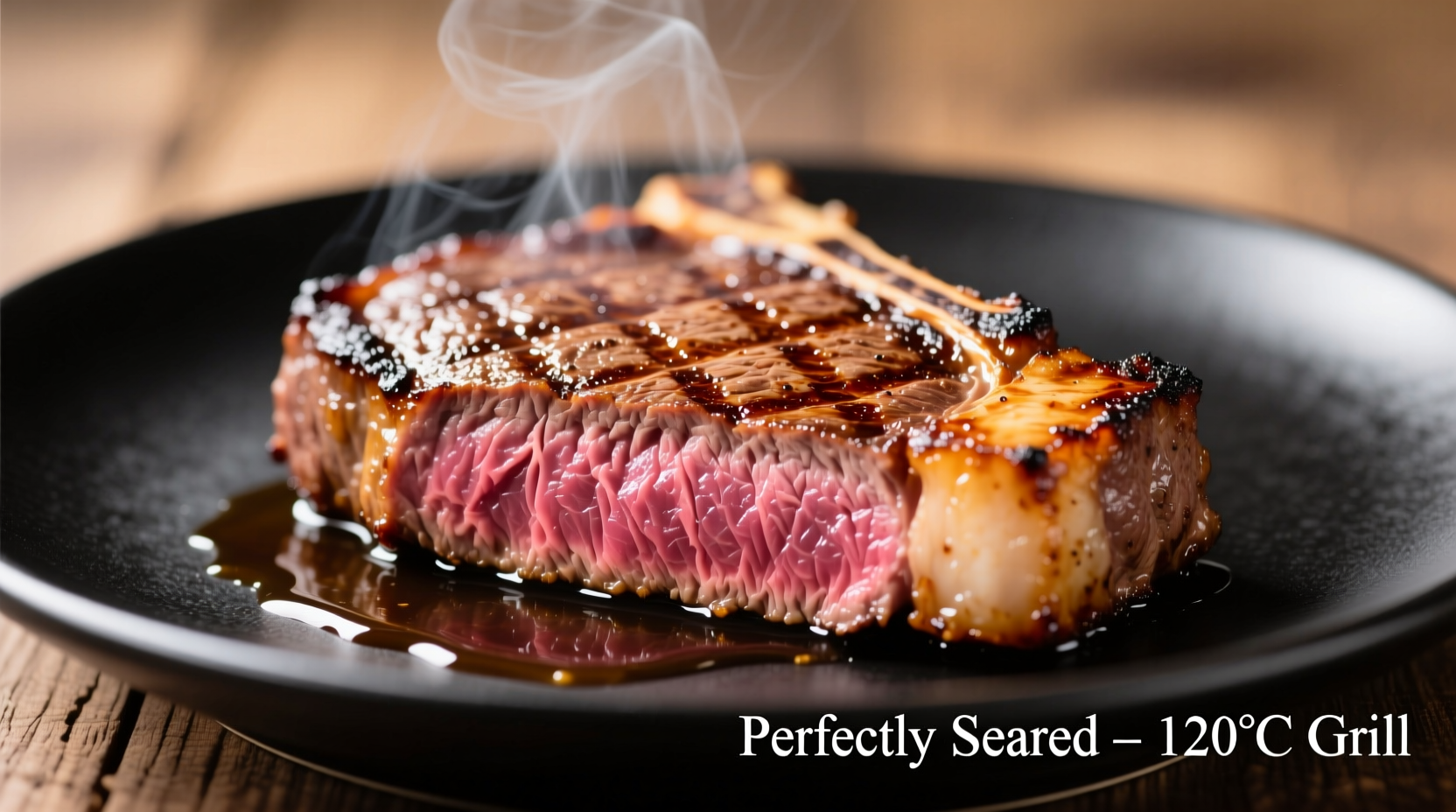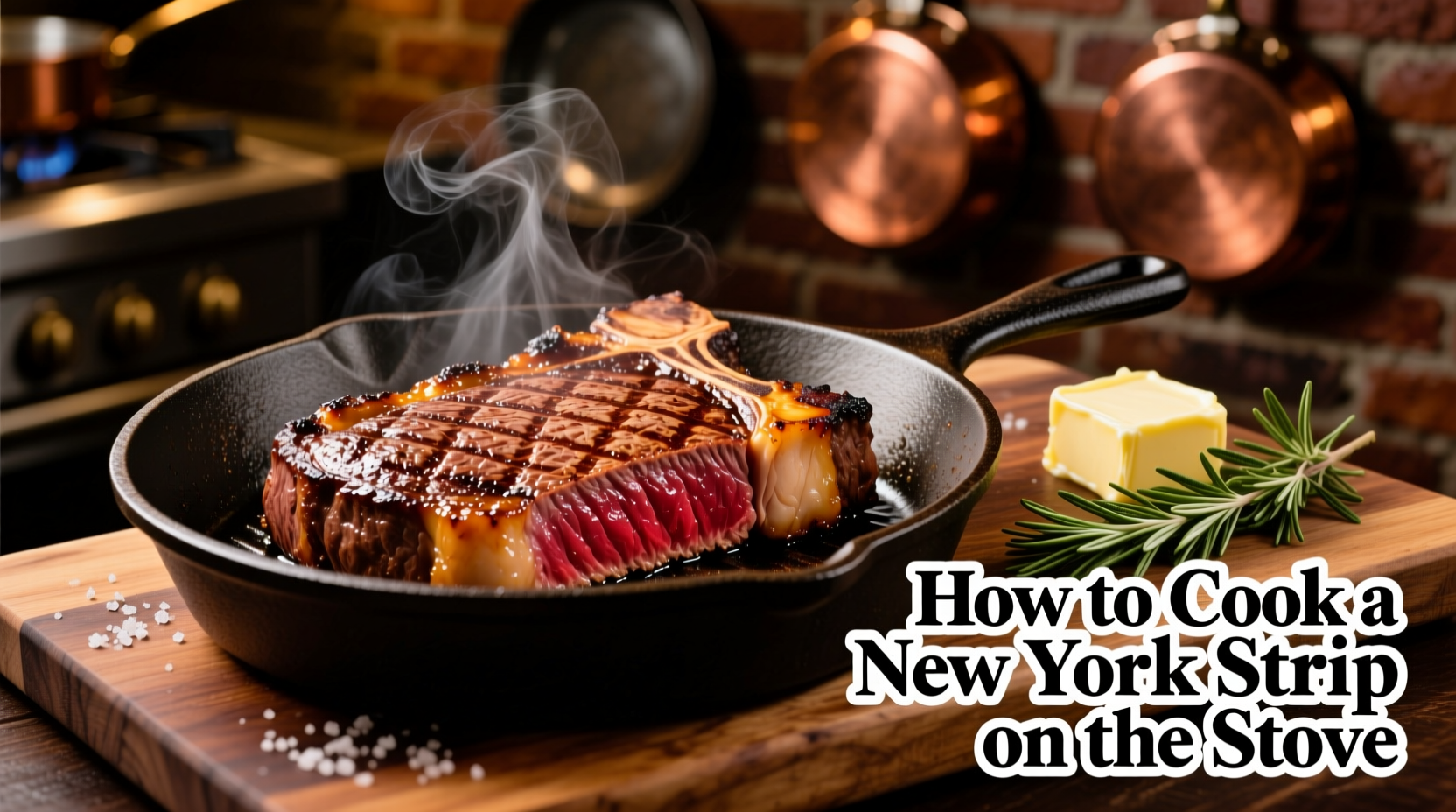Perfectly cook a New York strip steak on your stove in just 15 minutes with this professional method: Season a room-temperature 1-1.5 inch thick steak, sear in a smoking hot cast iron skillet for 3-4 minutes per side, finish to desired doneness (125°F for medium-rare), then rest 5-10 minutes before slicing. This technique delivers restaurant-quality results with a flavorful crust and juicy interior every time.
Mastering stove-top New York strip steak cooking unlocks restaurant-quality results in your own kitchen. This popular cut—known for its rich marbling and robust beef flavor—responds exceptionally well to high-heat stovetop cooking when handled correctly. Unlike thicker cuts requiring oven finishing, the NY strip's ideal thickness (typically 1-1.5 inches) makes it perfect for direct pan-searing. In this guide, you'll learn the precise timing, temperature control, and resting techniques that transform an ordinary steak into an extraordinary meal. Whether you're cooking for weeknight dinner or special occasions, these professional methods ensure consistently perfect results without special equipment.
Why Stovetop Cooking Works Best for NY Strip
The New York strip (also called top loin or Kansas City strip) comes from the short loin section, offering the perfect balance of tenderness and beefy flavor. Its moderate marbling melts during cooking, basting the meat internally while creating that coveted crust. Unlike ribeyes with larger fat caps or filets with minimal marbling, the NY strip's uniform thickness makes it ideal for stovetop cooking. Professional chefs prefer this method because it delivers maximum flavor development through the Maillard reaction—the chemical process where amino acids and sugars create complex roasted flavors at temperatures above 300°F.
Preparation: Setting Up for Success
Proper preparation separates good steak from great steak. Start with a high-quality NY strip steak at least 1 inch thick—thinner cuts overcook before developing proper crust. Remove the steak from refrigeration 45-60 minutes before cooking to bring it to room temperature. This critical step ensures even cooking throughout. Pat the surface completely dry with paper towels; moisture is the enemy of proper searing. Season generously with coarse kosher salt and freshly ground black pepper on all sides 30-45 minutes before cooking, allowing time for the salt to penetrate the surface.
Essential Equipment Checklist
- Cast iron or carbon steel skillet (retains heat better than nonstick)
- Heavy-duty tongs (avoid piercing the meat)
- Instant-read thermometer (critical for precision)
- Metal spatula for flipping
- Wire rack for resting
Step-by-Step Cooking Process
Heat your empty skillet over medium-high heat for 5-7 minutes until smoking hot. Add 1-2 tablespoons of high-smoke point oil (avocado or grapeseed) and wait until shimmering. Place the steak in the skillet away from you to avoid oil splatter. Press gently with a spatula for full contact, then immediately release. Cook undisturbed for 3-4 minutes to develop crust. Flip once using tongs and cook another 3-4 minutes. For thicker cuts (over 1.5 inches), tilt the steak and sear the edges for 30 seconds per side. Baste with butter, garlic, and herbs during the final 2 minutes for enhanced flavor.
| Doneness Level | Internal Temperature | Total Cooking Time* | Visual Indicators |
|---|---|---|---|
| Rare | 120-125°F (49-52°C) | 6-8 minutes | Bright red center, very soft to touch |
| Medium-rare | 130-135°F (54-57°C) | 8-10 minutes | Warm red center, tender with slight resistance |
| Medium | 140-145°F (60-63°C) | 10-12 minutes | Pink center, firm but yielding |
| Medium-well | 150-155°F (66-68°C) | 12-14 minutes | Slightly pink center, quite firm |
*For 1-1.5 inch thick steaks. USDA recommends minimum 145°F for safety, but many chefs prefer medium-rare at 130-135°F for optimal texture.

The Critical Resting Phase
Never skip resting your steak! Transfer the cooked steak to a wire rack (not a plate) and let it rest for 5-10 minutes—this allows juices to redistribute throughout the meat. Cutting too soon releases precious juices onto your cutting board instead of staying in the steak. During resting, the internal temperature will rise 5-10 degrees (carryover cooking), so remove the steak from heat when it's 5 degrees below your target temperature. This American Meat Science Association recommendation ensures optimal juiciness and texture.
Troubleshooting Common Issues
Problem: Steak sticks to the pan
Solution: The pan wasn't hot enough before adding steak. Properly preheated cast iron creates an instant sear that prevents sticking.
Problem: Uneven cooking
Solution: Steak wasn't at room temperature. Always let refrigerated steak warm up for 45-60 minutes before cooking.
Problem: Burnt exterior but raw interior
Solution: Pan was too hot or steak too thin. Use medium-high (not maximum) heat for thicker cuts, and choose steaks at least 1 inch thick.
Pro Tips for Next-Level Results
Enhance your NY strip with these professional techniques: Dry brine by salting 24 hours in advance for deeper flavor penetration. Add a teaspoon of rendered beef tallow to your cooking oil for authentic beefy notes. For extra crust development, press the steak gently against the pan with a clean kitchen towel-wrapped spatula during the first minute of cooking. Finish with a compound butter made from softened butter, minced garlic, and fresh herbs for luxurious flavor infusion.
Frequently Asked Questions
How long should I cook a 1.5 inch NY strip steak for medium-rare?
For a 1.5 inch thick NY strip steak, cook 4 minutes per side in a preheated 400°F skillet. Check temperature at 7 minutes—you want 125°F internally. Remember carryover cooking will raise temperature 5-10 degrees during resting.
Can I use a nonstick pan for cooking NY strip steak?
While possible, nonstick pans won't achieve the same crust as cast iron or carbon steel. Nonstick coatings typically can't withstand the 500°F+ temperatures needed for proper Maillard reaction. For best results, use a well-seasoned cast iron skillet that can handle high heat without damaging the seasoning.
Should I marinate a NY strip steak before cooking?
Marinating isn't necessary for NY strip as its natural marbling provides ample flavor. Simple salt and pepper seasoning works best. If using marinade, limit to 2 hours maximum as acidic ingredients can begin to break down the meat's texture. For most home cooks, dry seasoning produces superior results with this cut.











 浙公网安备
33010002000092号
浙公网安备
33010002000092号 浙B2-20120091-4
浙B2-20120091-4